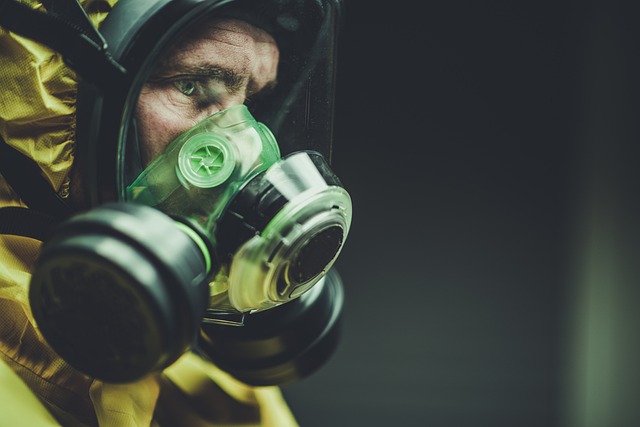Climate Change and Your Health: Staying Safe in a Warming World
Rising global temperatures, extreme weather events, and deteriorating air quality are creating unprecedented health challenges worldwide. As our planet continues to warm, understanding the direct connections between environmental changes and human health becomes crucial for protecting ourselves and our communities. From heat-related illnesses to respiratory complications caused by poor air quality, climate change is reshaping the health landscape in ways that demand immediate attention and proactive responses.

The relationship between climate change and human health extends far beyond what many people realize. As global temperatures rise and weather patterns become increasingly unpredictable, our bodies face new stressors that can significantly impact both immediate wellbeing and long-term health outcomes. Understanding these connections empowers individuals to take meaningful protective measures while advocating for broader environmental health initiatives.
How Extreme Weather Is Changing Everyday Health Risks
Extreme weather events are becoming more frequent and intense, creating direct health threats that were once considered rare occurrences. Heat waves now last longer and reach higher temperatures, leading to increased cases of heat exhaustion, heat stroke, and dehydration. Severe storms and flooding can contaminate water supplies, increase the risk of infectious diseases, and disrupt access to healthcare services. Droughts affect food security and water quality, while unpredictable weather patterns can exacerbate existing mental health conditions through increased stress and anxiety about environmental uncertainty.
The Impact of Heat, Air Quality, and Pollution on the Body
Rising temperatures place significant stress on the cardiovascular system as the body works harder to maintain normal temperature through increased heart rate and blood circulation. Prolonged exposure to extreme heat can lead to kidney dysfunction, electrolyte imbalances, and cognitive impairment. Poor air quality, often worsened by higher temperatures that increase ground-level ozone formation, triggers respiratory problems including asthma attacks, bronchitis, and reduced lung function. Fine particulate matter from wildfires and industrial pollution penetrates deep into lung tissue, contributing to cardiovascular disease and premature mortality.
Practical Tips for Staying Cool, Hydrated, and Protected
Effective protection begins with creating a cool environment at home through proper ventilation, fans, or air conditioning when possible. During extreme heat, staying indoors during peak temperature hours typically between 10 AM and 4 PM provides the best protection. Maintaining proper hydration requires drinking water regularly before feeling thirsty, avoiding alcohol and caffeine during hot weather, and consuming electrolyte-rich foods like fruits and vegetables. Lightweight, light-colored, loose-fitting clothing helps the body regulate temperature more effectively. Installing air purifiers, monitoring local air quality indexes, and avoiding outdoor activities during high pollution days protects respiratory health.
Why Vulnerable Groups Face Greater Environmental Challenges
Certain populations experience disproportionate health impacts from climate change due to physiological, social, and economic factors. Older adults have reduced ability to regulate body temperature and may take medications that impair heat response. Young children have developing immune systems and higher respiratory rates that increase their vulnerability to air pollution. People with chronic conditions like diabetes, heart disease, or respiratory disorders face amplified risks during extreme weather events. Low-income communities often lack access to air conditioning, live in areas with higher pollution levels, and have limited resources to adapt to environmental changes. Outdoor workers, including agricultural laborers and construction crews, experience prolonged exposure to heat and poor air quality with limited protection options.
| Health Protection Strategy | Implementation Method | Estimated Cost |
|---|---|---|
| Home Air Purification | HEPA filter systems | $100-$800 annually |
| Cooling Solutions | Portable AC units, fans | $200-$1,500 initial |
| Hydration Systems | Water filtration, electrolyte supplements | $50-$300 annually |
| Protective Clothing | UV-resistant, cooling fabrics | $100-$400 per season |
| Emergency Preparedness | First aid supplies, backup power | $200-$1,000 initial |
Prices, rates, or cost estimates mentioned in this article are based on the latest available information but may change over time. Independent research is advised before making financial decisions.
Building a Healthier Future Through Awareness and Prevention
Long-term health protection requires both individual actions and community-wide initiatives that address the root causes of climate-related health risks. Supporting renewable energy adoption, advocating for improved building codes that prioritize energy efficiency and cooling, and participating in local environmental health planning help create systemic change. Regular health screenings become increasingly important as environmental stressors can accelerate the development of chronic conditions. Staying informed about local climate projections and health recommendations enables proactive planning for future challenges.
Climate change represents one of the most significant public health challenges of our time, but informed preparation and collective action can significantly reduce its impact on individual and community health. By understanding the connections between environmental changes and health outcomes, implementing practical protective measures, and supporting broader environmental initiatives, we can build resilience against the health challenges of our warming world while working toward sustainable solutions that benefit both human health and planetary wellbeing.
This article is for informational purposes only and should not be considered medical advice. Please consult a qualified healthcare professional for personalized guidance and treatment.




